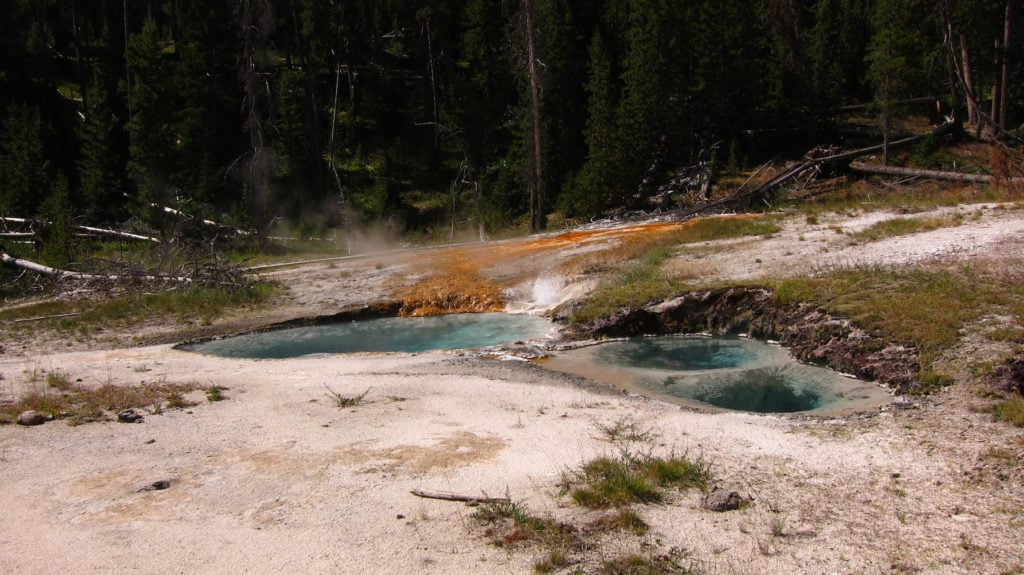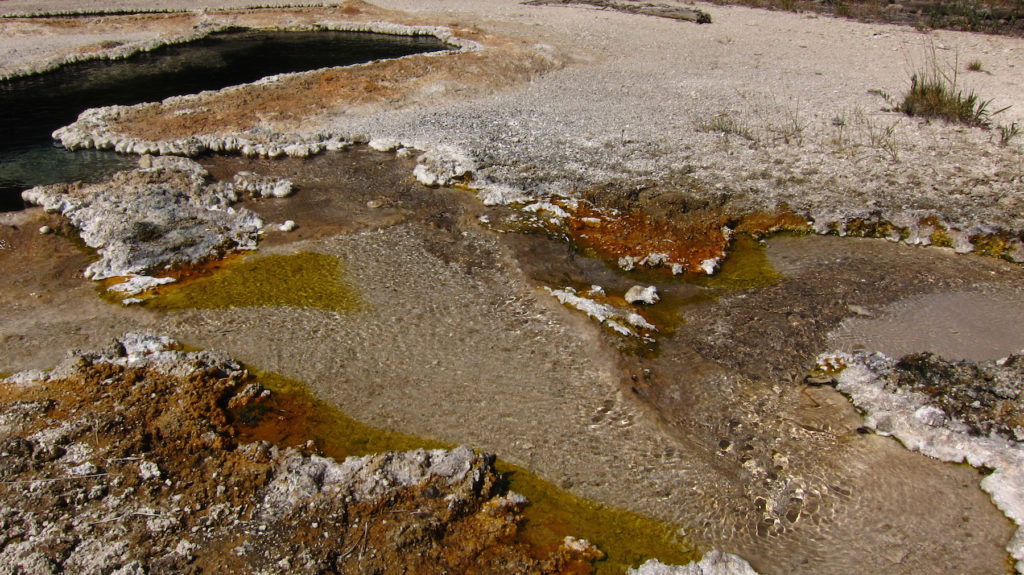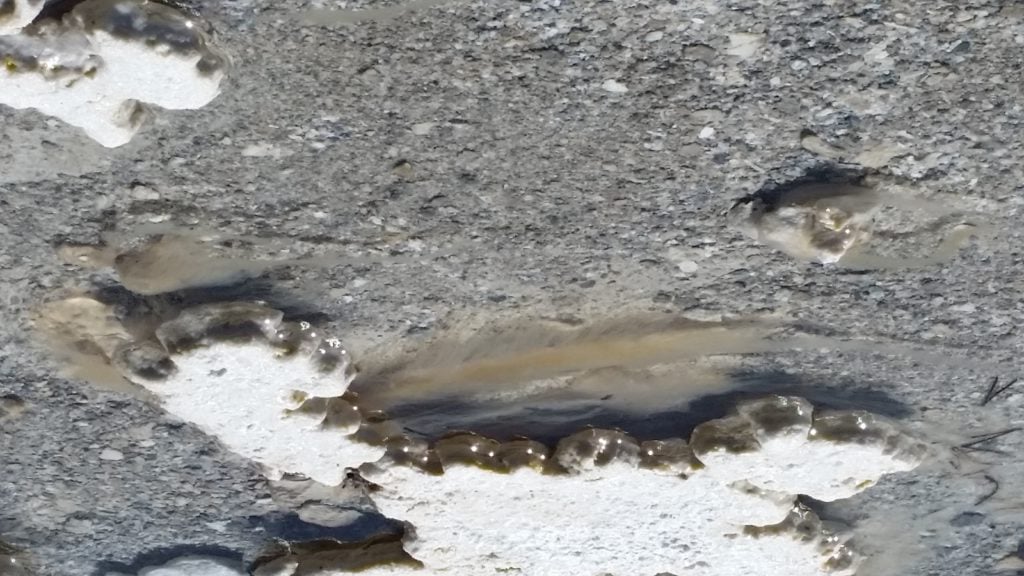
These hot springs—often as clear as swimming pools, as though methodically poisoned to kill algae and small plants—are chocked with life. Even pools of boiling sulfuric acid have diverse communities of microbes. They drift invisibly in the crystal-clear center, down to depths of many meters. They can live without light or oxygen. Around the rims, colored bands of brown, red, yellow, and green are national borders. On one side, one kind of life thrives and repels its enemies; on the other, one of those enemies has found the tangy land of sour milk and rancid honey.
“There’s more diversity in these pools,” Everett Shock tells me, than all the macroscopic life you can see here at Yellowstone–pine trees, bison, bears, elk, shrubs, grass…all of it.”
The springs runneth over. The outflow finds the lowest point of exit from the pool and winds down the hill, where it braids with many others to form Geyser Creek. To the untrained eye, these outflows are unspectacular, compared to the pools. But Shock helps me learn to see. These outflows are rich with life and form laboratories for microbe hunters.
They present a wealth of different environments. At one spot that I’d been inclined to hop across, Shock pulled me close and made me look. Two outflows merged. One was acidic, the other basic. In a little wedge just above the confluence, was a patch of green, where photosynthetic bacteria thrived. “This boundary may represent the beginning of conditions under which photosynthesis is viable,” he said. “Looking at the bands is like going back in time.”

Here, you can often see the microbes—or at least their cities. The scientists call them “streamers.” The tiny bugs build ribbons of minerals that undulate like hair in the current. Some are pink, some green, others a nearly colorless grayish. The least pretty are some of the most interesting. Even though plenty of sunlight and oxygen is available to them, they don’t use it. They are anaerobic and draw their energy from hydrogen produced in the Earth’s mantle. I was not the first to think the colorless streamers looked like mucous; one pool particularly rich with them was called “Spent Kleenex.”
Let’s say you arrived on Earth to take samples, and you took an enormous bite out of a skyscraper—a couple hundred cubic feet, say. You load it onto your ship for analysis. Your instruments would record a lot of steel, glass, and plastic…and a small proportion of living material. Perhaps your scoop grabbed an administrator and a middle manager—no more than a few percent of the total mass of the sample. Would you taste it?

On an earlier field trip, apparently at a moment of boredom and certainly out of Shock’s earshot, one student pointed to some streamers and said to another, “I’ll give you a quarter if you eat one of those.” To the surprise and delight of the group, she plucked one out, blew on it a few times, and popped it into her mouth. Peals of laughter rang out through the field site. “How does it taste?” they asked, wanting to know.
“It’s flavorless,” she replied, “But it’s crunchy.”
When, several years later Shock’s group performed a chemical analysis on the streamers, they found that they contained only about two percent organic carbon. The streamer is unquestionably a product of biological processes, but almost all of the carbon in it comes from inorganic sources. It’s a mineral structure built by the community; it is their skyscraper.
What are the streamers for? The paleontologist Stephen Jay Gould was fond of pointing out the dangers of thinking that every biological structure must have a purpose, but it’s worth asking the question, judiciously. One possibility is that the streamer is simply sandy poop—not functional but merely a waste product resulting from their metabolism. The underlying geology in this region is heavily based on silica. If, for example, you needed to get rid of a lot of silica, it might stick together and remain bound up with the sticky, mucousy microbes.
Another possibility is that the streamer is a fishing net, a matrix that captures nutrients as they float past. Life and mineral could be inseparable; without their sandy sieve, the microbial community might not survive in the stream, which must feel a bit like a Himalayan peak to microbes accustomed to living in dark, toasty, anoxic pools of boiling sulfuric acid.
Streamers thus lead us to think of life as many astrobiologists do. We are all geo-biological systems. We are suffused with minerals, from the salt in our tears to the iron in our blood. The most ancient biological catalysts have metal centers, probably acquired from the surrounding rock in an undersea geothermal vent four billion years ago. Since then, ground rock and metal have cycled constantly through our bodies.
We are streamers, we are iron, and we’ve got to get ourselves back to the geothermal garden.
You must be logged in to post a comment.